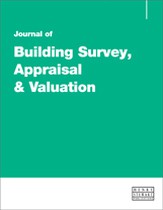Evaluating the durability of mortise-tenon joints in response to natural moisture weathering over time
Abstract
When used in the appropriate context, timber structures might have lower embodied carbon than their concrete and steel counterparts, making timber a popular material for sustainable construction practices. To continue constructing with timber we require more in-depth exploration into timber joinery, which dictates the structural stability and performance of timber-framed construction. Moisture can affect the performance of timber joints. Rapid moisture changes over time can lead to joint failure, affecting the structure’s stability and safety. It is therefore important to understand how natural moisture weathering changes affect timber joints to ensure the longevity and safety of structures made from timber. This paper presents and discusses the results of a series of tests conducted by subjecting samples of timber joints to cyclically varying moisture conditions for several cycles and ultimately judging their effect on the performance of timber joints by measuring their rotational stiffness. The experiments select three commonly used timber joint reinforcement methods — traditional mortise and tenon joints, mortise and tenon dowel reinforcement and mortise and tenon glue reinforcement — to represent the majority of timber buildings in the UK. The results were compared to identify the advantages and disadvantages of the three reinforcement methods. The outcomes demonstrate that prolonged exposure to moisture can have a great impact on the performance of timber connections, resulting in decreased stiffness and strength. The use of reinforcement methods, however, such as mortise and tenon dowel reinforcement or mortise and tenon glue reinforcement, can mitigate the negative effects of moisture weathering changes on timber joints. This paper emphasises the importance of understanding moisture weathering changes and their impact on timber joints to ensure the longevity and safety of structures made from timber.
The full article is available to subscribers to the journal.
Author's Biography
Yueyao Wang MEng, attained her Master’s in engineering and Part 1 RIBA accreditation at the Bartlett School of Architecture, University College London (UCL), in the pioneering dual-accredited programme in engineering and architectural design and now works as a structure engineer. Since her graduation in autumn 2023, she has remained steadfast in her dedication to the exploration and maintenance of timber in both long-term and temporary structures. Her interests lie in seamlessly integrating timber into modern architectural design and functionality, preserving and repurposing disused and historical buildings, optimising project models through finite element structural analysis and championing responsive sustainable development strategies.
Regina Dufu Muller-Uri MEng, having achieved first class honours, Master’s in engineering and Part 1 RIBA accreditation in the dual accredited course engineering and architectural design at the Bartlett School of Architecture, University College London (UCL), has been working as a façade engineer since graduation in autumn 2023. Her interests lie in the integration of timber into modern buildings, the effects of exposure to harsh external environments, investigation into the thermal performance of façade build-ups and specific connections, and integrating robust sustainability practices holistically into early design stages in a way that avoids greenwashing.
Citation
Wang, Yueyao and Dufu Muller-Uri, Regina (2025, January 1). Evaluating the durability of mortise-tenon joints in response to natural moisture weathering over time. In the Journal of Building Survey, Appraisal & Valuation, Volume 13, Issue 3. https://doi.org/10.69554/ICHR6417.Publications LLP
